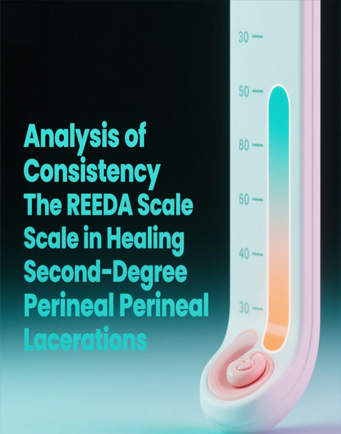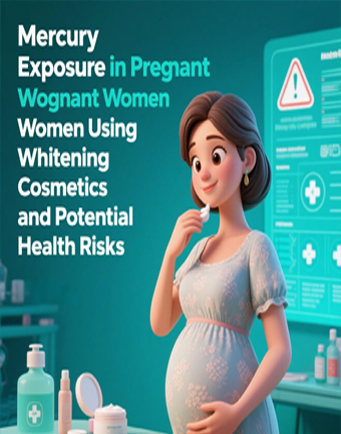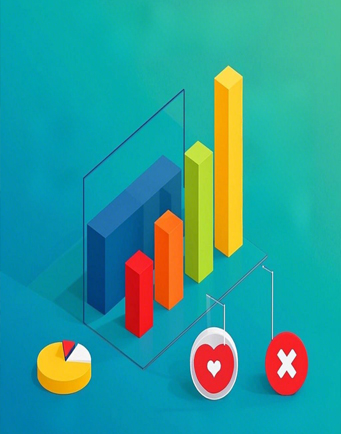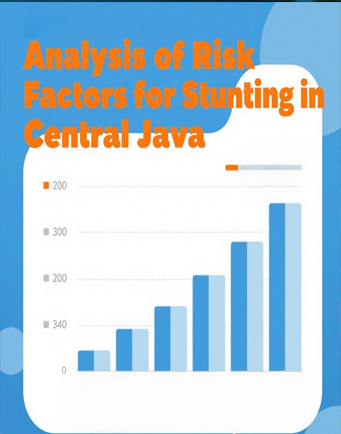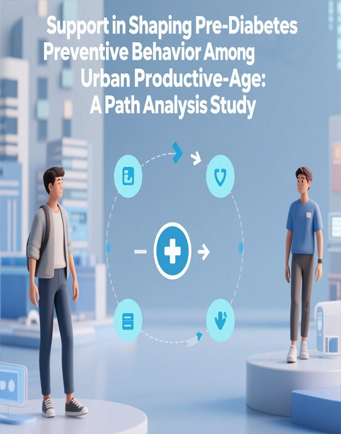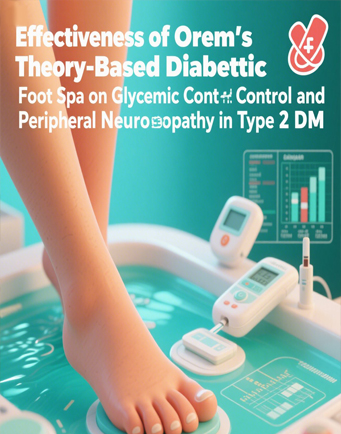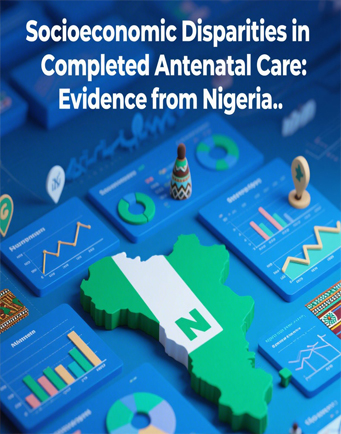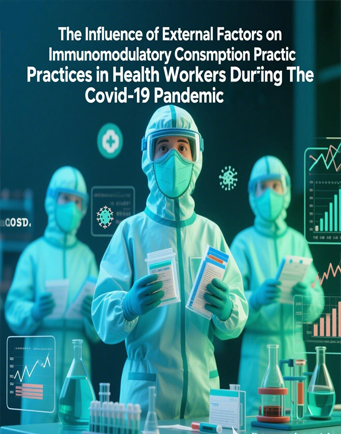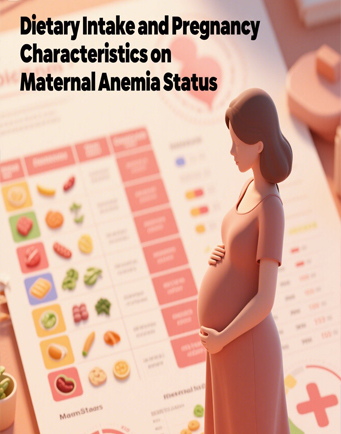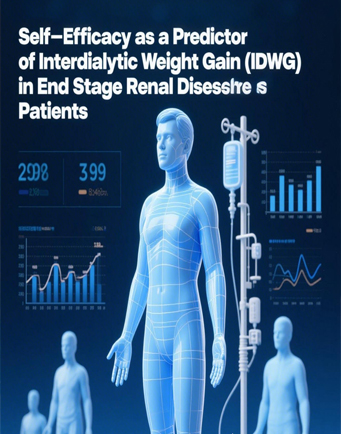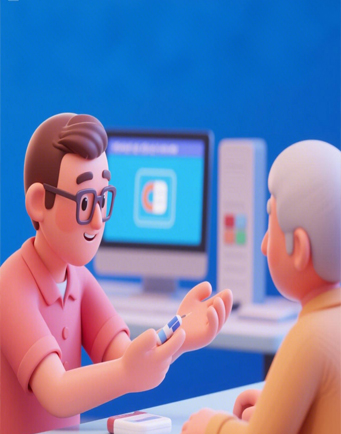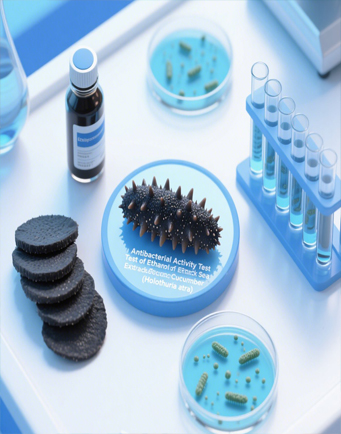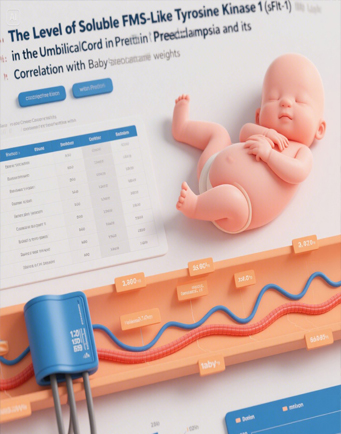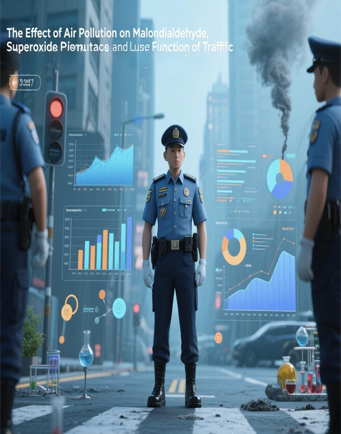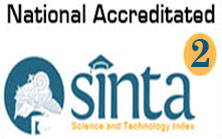The Impact of Homecare on Breastfeeding Skills in Postpartum Mothers
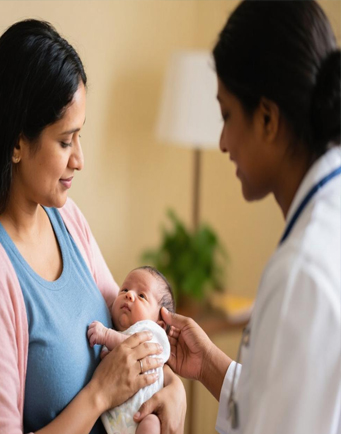
Downloads
The postpartum period is a critical phase for both mothers and newborns, during which the mother's physical and psychological recovery occurs alongside the initiation of breastfeeding. Although breastfeeding is a natural process, many postpartum mothers face challenges in initiating and sustaining effective breastfeeding practices. Homecare has emerged as an effective strategy to improve maternal and child health. This study aims to analyze the impact of homecare on breastfeeding skills in postpartum mothers. The study was conducted in Surakarta City used a quasi-experimental design with a pretest-posttest with control group approach. Purposive sampling was employed, involving a total of 50 respondents divided equally into two groups: an intervention group and a control group. A 30-day breastfeeding skills training intervention was provided to postpartum mothers, carried out by midwives, with each session lasting 30 minutes per day. Data analysis was conducted used the paired t-test the Wilcoxon signed- rank test. Results showed that the paired t-test of the control group pretest and posttest with a mean value of 0.52 and the paired t-test of the intervention group pretest and posttest with a mean value of 5.44. While the statistical significance showed the p-value for the control group was 0.0018 and for the intervention group was approximately 0.0000000596. These findings demonstrate strong statistical significance, supporting the hypothesis that homecare exert a positive effect. In conclusion, homecare play a significant role in enhancing breastfeeding skills among postpartum mothers, with greater improvements observed in the intervention group compared to the control group.
Ballard, O., & Morrow, A. L. (2013). Human milk composition: nutrients and bioactive factors. Pediatric Clinics, 60(1), 49-74. http://doi.org/10.1016/j.pcl.2012.10.002
Beach, K. (2018). The Impact of In-Home Lactation Support on Breastfeeding Self-efficacy, Duration, and Exclusivity. Belmont University. Retrieved from: https://repository.belmont.edu/dnpscholarlyprojects/3/
Cohen, L., Manion, L., & Morrison, K. (2011). Research Methods in Education (7th ed.). Routledge. https://doi.org/10.4324/9780203720967
Dahab, A.A., Miski, S.S., Hajjaj, A.M., Alnughmush, M.S., Buradhah, F.E., Basakran, G.G. (2024). A review on the role of postpartum homecare program in identification , managing and preventing common complications. International Journal of Community Medicine and Public Health, 11(11), 4480–4485. http://doi.org/10.18203/2394-6040.ijcmph20242992
Dennis, C.L. (2003). The Breastfeeding Self-Efficacy Scale: Psychometric Assessment of the Short Form. Journal of obstetric, gynecologic, and neonatal nursing : JOGNN, 32(6), 734–744. http://doi.org/10.1177/0884217503258459.
Di, X., Ge, X.-L., Wang, D. (2024). Effect of Care Intervention With A Health Education Form For Breastfeeding on Breast Distension, Pain, and Lactation in Postpartum Mothers. World Journal of Clinical Cases, 12(22), 5059–5066. http://doi.org/10.12998/wjcc.v12.i22.5059
Finello, K.M., Terteryan, A., Riewerts, R.J. (2016). Home Visiting Programs: What the Primary Care Clinician Should Know. Current problems in pediatric and adolescent health care, 46(4), 101–125. http://doi.org/10.1016/j.cppeds.2015.12.011.
Gadeberg, A. K., Nilsson, I. M. S., Christensen, U., Jacobsen, M. H., Rossau, H. K., & Villadsen, S. F. (2024). How do home visits during pregnancy strengthen breastfeeding support postpartum? A realist evaluation of a large Danish breastfeeding intervention. Copenhagen. University of Copenhagen. Retrieved from: https://www.researchsquare.com/article/rs-4538634/v1
Glassman, M.E., Blanchet, K., Andresen, J., Lewis, R.A., Rosenthal, S.L. (2022). Impact of Breastfeeding Support Services on Mothers’ Breastfeeding Experiences When Provided by an MD/IBCLC in the Pediatric Medical Home. Clinical pediatrics, 61(5–6), 418–427. http://doi.org/10.1177/00099228221086375.
Ip, S., Chung, M., Raman, G., Chew, P., Magula, N., DeVine, D., Trikalinos, T., Lau, J. (2007). Breastfeeding and Maternal and Infant Health Outcomes in Developed Countries. Evidence report/technology assessment, (153), 1–186. Retrieved from: https://pubmed.ncbi.nlm.nih.gov/17764214/.
Johnson, T.S., Brennan, R.A., Flynn-Tymkow, C.D. (1999). A Home Visit Program For Breastfeeding Education and Support. Journal of obstetric, gynecologic, and neonatal nursing : JOGNN, 28(5), 480–485. http://doi.org/10.1111/j.1552-6909.1999.tb02020.x.
Kahraman, S., Havlioğlu, S. (2024). The Effect of Home Nurse Visits on Infant Weight and Breastfeeding: Systematic Review and Meta-Analysis. International journal of nursing practice, 30(1), 13150. http://doi.org/10.1111/ijn.13150.
Kassianos, A.P., Ward, E., Rojas-Garcia, A., Kurti, A., Mitchell, F.C., Nostikasari, D., Payton, J., Pascal-Saadi, J., Spears, C.A., Notley, C. (2019). A Systematic Review and Meta-Analysis of Interventions Incorporating Behaviour Change Techniques To Promote Breastfeeding Among Postpartum Women. Health Psychology Review, 13(3), 344–372. http://doi.org/10.1080/17437199.2019.1618724.
Kronborg, H., Vaeth, M., Kristensen, I. (2012). The Effect of Early Postpartum Home Visits By Health Visitors: A Natural Experiment. Public health nursing (Boston, Mass.), 29(4), 289–301. http://doi.org/10.1111/j.1525-1446.2012.01019.x
Lestari, P. P., Astuti, D. A., & Nurdiati, D. S. (2018). Pengaruh Dukungan Sosial Pada Keberhasilan Menyusui di RSUD Panembahan Senopati Kabuaten Bantul. Prosiding Konferensi Nasional Ke-7, 74-77.
Lucas, R., R., Zhang, Y., Walsh, S.J., Evans, H., Hartford, W., Young, E., Starkweather, A. (2019). Efficacy of A Breastfeeding Pain Self-Management Intervention: A Pilot Randomized Controlled Trial (RCT) Ruth. Nurs Res, 68(2), 1–18. http://doi.org/10.1097/NNR.0000000000000336
Nababan, T., Nurhalisa, V., Sudari, S., Nafisya, S., Faustina, V.C. (2023). Hubungan Pengetahuan Ibu tentang Manajemen Laktasi dengan Keberhasilan ASI Ekslusif. Malahayati Nursing Journal, 5(7), 2238–2247. http://doi.org/10.33024/mnj.v5i7.8513
Olson, T., Bowen, A., Smith-Fehr, J., & Ghosh, S. (2019). Going home with baby: innovative and comprehensive support for new mothers. Primary Health Care Research & Development, 20, e18. http://doi.org/10.1017/S1463423618000932
Pramanik, Y., Sumbara, Sholihatul, R. (2020). Hubungan Self-Efficacy Ibu Menyusui Dengan Pemberian ASI Eksklusif di Wilayah Kerja Puskesmas Tamansari Kota Bandung. Jurnal Ilmiah Kesehatan Iqra, 8(1), 39–44. http://doi.org/10.30633/jkms.v12i2.1347
Puspitasari, D., & Candra, K. (2021). Penerapan Pendidikan Kesehatan Teknik Menyusui Yang Benar Untuk Mencapai Keberhasilan Asi Eksklusif. Jurnal Kesehatan Siliwangi, 2(2).
Riordan, J., Gill-Hopple, K. (2001). Breastfeeding Care in Multicultural Populations. Journal of Obstetric, Gynecologic & Neonatal Nursing, 30(2), 216–223. http://doi.org/10.1111/j.1552-6909.2001.tb01538.x
Saadah, N., Puspitasari, I.D., Sumaningsih, R. (2024). The Effect of Providing Exclusive Breastfeeding Counseling on the Self-Efficacy of Breastfeeding Mothers. International Journal of Advanced Health Science and Technology, 4(3), 372–378. http://doi.org/10.35882/ijahst.v4i3.352
Scott, J.A., Binns, C.W., Oddy, W.H., Graham, K.I. (2006). Predictors of Breastfeeding Duration: Evidence From A Cohort Study. Pediatrics, 117(4), 646-55. http://doi.org/10.1542/peds.2005-1991
Setyawati, E., Pasiriani, N. (2021). Effectiveness of Home Visits Treatment on Breastfeeding in Balikpapan 2019. The International Conference on Lactation Management in COVID-19 Pandemic Era, pp.110–118.
Sugiyono. (2015). Metode Penelitian Pendidikan (Pendekatan Kuantitatif, Kualitatif dan R&D). Bandung: ALFABETA.
Tiruneh, G.T., Shiferaw, C.B., Worku, A. (2019). Effectiveness and Cost-Effectiveness of Home-Based Postpartum Care on Neonatal Mortality And Exclusive Breastfeeding Practice in Low-And-Middle-Income Countries: A Systematic Review and Meta-Analysis. BMC Pregnancy and Childbirth, 19(1), 1–19. http://doi.org/10.1186/s12884-019- 2651-6
Ugurlu, M., Yavan, T. (2016). The Effectiveness of Breastfeeding Education: An Integrative Review. Journal of Behavioral Health, 5(4), 182. http://doi.org/10.5455/jbh.20160224063449
UNICEF. (2023). Angka Menyusui di Indonesia Turun: Ibu Memerlukan Dukungan yang Lebih Mapan. Unicef Indonesia. Retrieved from: https://www.unicef.org/indonesia/id/gizi/siaran-pers/angka-menyusui-di-indonesia-turun-ibu-memerlukan-dukungan-yang-lebih-mapan
UNICEF. (2018). Breastfeeding: A mother’s Gift, For Every Child. UNICEF Retrieved from: https://data.unicef.org/resources/breastfeeding-a-mothers-gift-for-every-child/
Unjidos, N., Barros, V., Krebs, M. (2017). Clinic breastfeeding in home, integral intervention of support for the success of the breastfeeding process. Horiz_Enferm, 28(3), 59–77. http://doi.org/107764/Horiz_Enferm.28.3.59
WHO. (2016). Home Visiting for Maternal and Child Health: A Handbook for Planning and Implementation, World Health Organization.
WHO (2009). Infant and Young Child Feeding, Switzerland: WHO Library Cataloguing- in-Publication Data.
Widayati, E., Lestari, R., Widiastuti, N. (2022). The Effectiveness of Lactation Counseling on Knowledge, Self-Confidence, and Successful Breastfeeding for Postpartum Mothers. Global Medical & Health Communication (GMHC), 10(1), 74–78. http://doi.org/10.29313/gmhc.v10i1.8811
Copyright (c) 2025 JURNAL INFO KESEHATAN

This work is licensed under a Creative Commons Attribution-NonCommercial-ShareAlike 4.0 International License.
Copyright notice
Ownership of copyright
The copyright in this website and the material on this website (including without limitation the text, computer code, artwork, photographs, images, music, audio material, video material and audio-visual material on this website) is owned by JURNAL INFO KESEHATAN and its licensors.
Copyright license
JURNAL INFO KESEHATAN grants to you a worldwide non-exclusive royalty-free revocable license to:
- view this website and the material on this website on a computer or mobile device via a web browser;
- copy and store this website and the material on this website in your web browser cache memory; and
- print pages from this website for your use.
- All articles published by JURNAL INFO KESEHATAN are licensed under the Creative Commons Attribution 4.0 International License. This permits anyone to copy, redistribute, remix, transmit and adapt the work provided the original work and source is appropriately cited.
JURNAL INFO KESEHATAN does not grant you any other rights in relation to this website or the material on this website. In other words, all other rights are reserved.
For the avoidance of doubt, you must not adapt, edit, change, transform, publish, republish, distribute, redistribute, broadcast, rebroadcast or show or play in public this website or the material on this website (in any form or media) without appropriately and conspicuously citing the original work and source or JURNAL INFO KESEHATAN prior written permission.
Permissions
You may request permission to use the copyright materials on this website by writing to jurnalinfokesehatan@gmail.com.
Enforcement of copyright
JURNAL INFO KESEHATAN takes the protection of its copyright very seriously.
If JURNAL INFO KESEHATAN discovers that you have used its copyright materials in contravention of the license above, JURNAL INFO KESEHATAN may bring legal proceedings against you seeking monetary damages and an injunction to stop you using those materials. You could also be ordered to pay legal costs.
If you become aware of any use of JURNAL INFO KESEHATAN copyright materials that contravenes or may contravene the license above, please report this by email to jurnalinfokesehatan@gmail.com
Infringing material
If you become aware of any material on the website that you believe infringes your or any other person's copyright, please report this by email to jurnalinfokesehatan@gmail.com.


